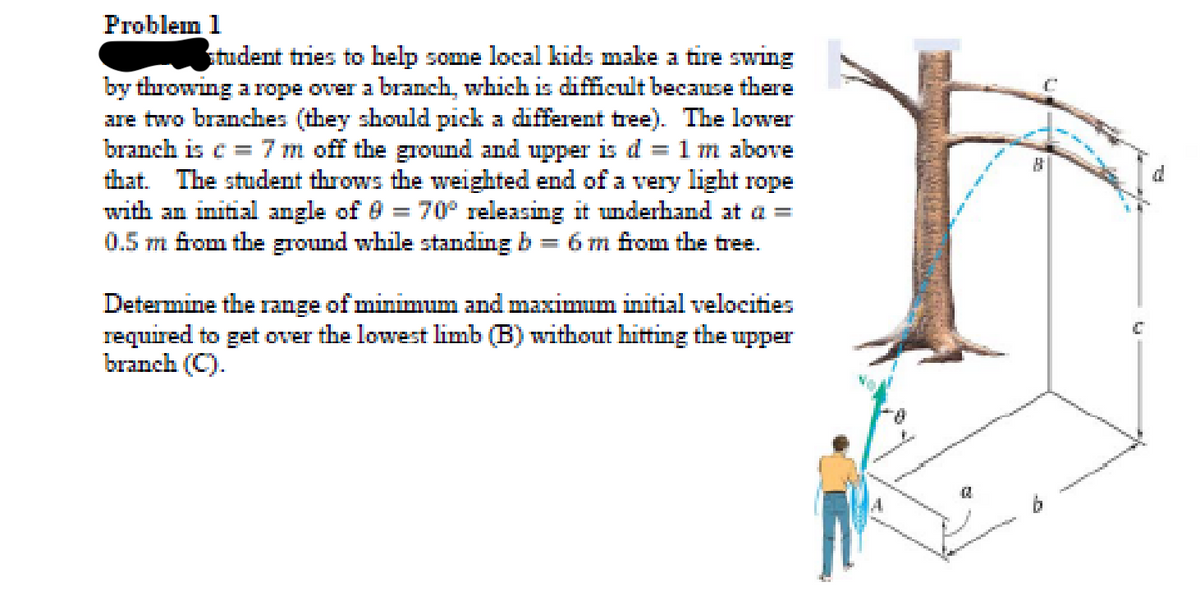Problem 1 tudent tries to help some local kids make a tire swing by throwing a rope over a branch, which is difficult because there are two branches (they should pick a different tree). The lower branch is c = 7 m off the ground and upper is d = 1 m above that. The student throws the weighted end of a very light rope with an initial angle of 0 = 70° releasing it underhand at a = 0.5 m from the ground while standing b = 6 m from the tree. Determine the range of minimum and maximum initial velocities required to get over the lowest limb (B) without hitting the upper branch (C).
Problem 1 tudent tries to help some local kids make a tire swing by throwing a rope over a branch, which is difficult because there are two branches (they should pick a different tree). The lower branch is c = 7 m off the ground and upper is d = 1 m above that. The student throws the weighted end of a very light rope with an initial angle of 0 = 70° releasing it underhand at a = 0.5 m from the ground while standing b = 6 m from the tree. Determine the range of minimum and maximum initial velocities required to get over the lowest limb (B) without hitting the upper branch (C).
Related questions
Question

Transcribed Image Text:Problem 1
student tries to help some local kids make a tire swing
by throwing a rope over a branch, which is difficult because there
are two branches (they should pick a different tree). The lower
branch is e = 7 m off the ground and upper is d = 1 m above
that. The student throws the weighted end of a very light rope
with an initial angle of 0 = 70° releasing it underhand at a =
0.5 m firom the ground while standing b = 6 m from the tree.
%3D
Determine the range of minimum and maximm initial velocities
required to get over the lowest limb (B) without hitting the upper
branch (C).
Expert Solution
This question has been solved!
Explore an expertly crafted, step-by-step solution for a thorough understanding of key concepts.
This is a popular solution!
Trending now
This is a popular solution!
Step by step
Solved in 2 steps
